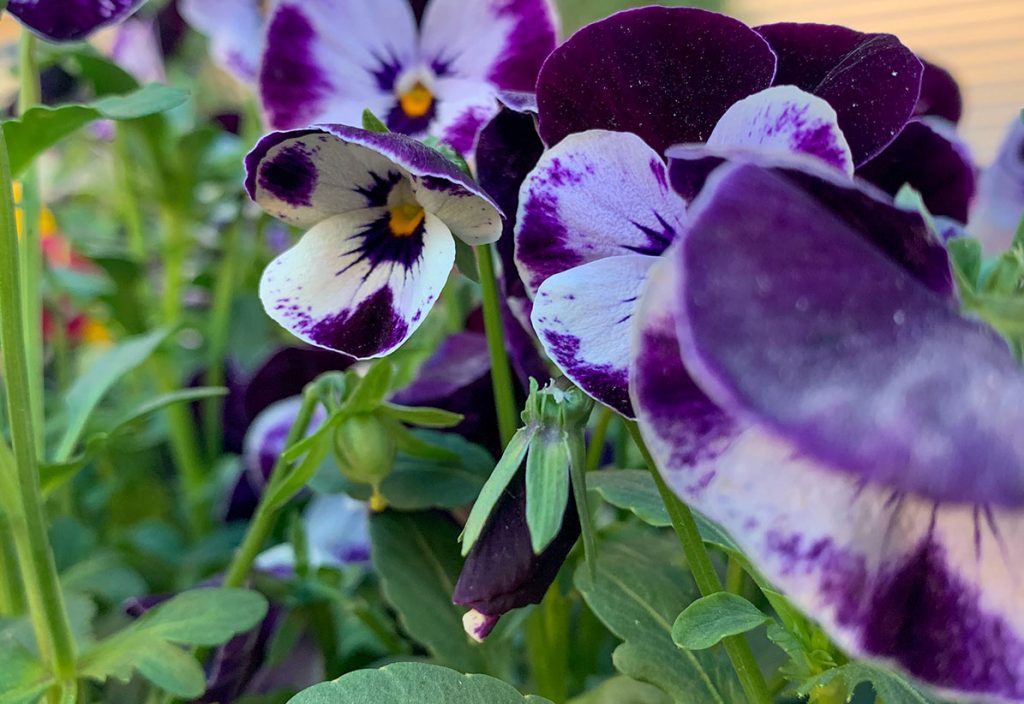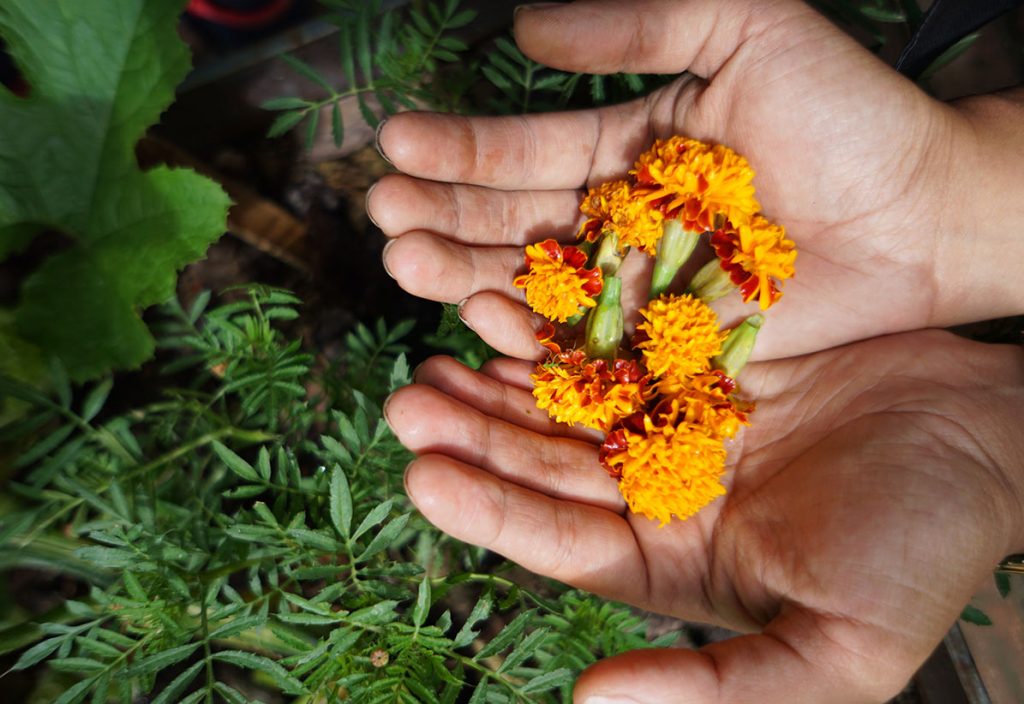Edible flowers
Learn about edible flowers that adorn our food or have healing or medicinal properties with the farmer and agronomist engineer Melissa Carrera Carmona.
You read that right, flowers can be eaten. We grew up seeing our grandmothers working in their gardens believing that the flowers only looked pretty in vases or in the pots of the garden but the reality is that there are endless f lowers that are not only beautiful before our eyes, they are also edible, they adorn our dishes, desserts, drinks and have curative or medicinal properties. This of course is nothing new, f lowers have been considered healers for thousands of years and have been incorporated into the most refined dishes from ancient cultures and included in their most sacred rituals.
The production of edible flowers is similar, not identical, to the production of vegetables. These must be grown organically with only four ingredients: sun, soil, organic fertilizers and water. Sowing: the best advice will always be to start from the seeds. Let me tell you, germinating flower plants is a challenge, mainly because most of them can take up to 25 days to germinate. Starting with the seed, you perfectly recognize all the stages of growth.

Materials needed to plant flowers
Photography: Melissa Carmona
To start with the sowing you need:
Seeds (use the ones of your choice), markers, tongue blades or tape, container to prepare substrate, substrate, watering can and water. It is very important to get a substrate (the earth) with good moisture retention and drainage, you can find it in garden stores as a germination or universal substrate, to cover the seeds you can use vermiculite (mineral-based substrate) but don’t worry if you don’t get it, with the universal substrate will be enough. As for the seedlings, there are special trays or containers, but without a doubt you can reuse an old yogurt container or tupper, just make sure it has a hole underneath.

Steps
1. Now let’s get down to business! You will start by moistening the substrate, you should have a homogeneous mixture, without puddles or mud, simply a moistened earth, if you overdo it, just add more substrate.
2. Fill your seedbeds, try to fill it to the top but do not squeeze or make pressure to the substrate.
3. With your little finger or a marker make a hole, this will have to have a depth equal to 2 or 3 times the size of your seed, if the seed is very small the cavity should be almost superficial.
4. Deposit 1 or 2 seeds per hole.
5. Sprinkle vermiculite or more substrate on top of your seeds, as if you were placing a pinch of salt, in this step it is not necessary to be so generous with the substrate, once again, just remember not to make pressure or squeeze.
6. Water lightly and don’t forget to date the label! Take your tongue blade or a bit of masking and put the name of the flower as well as the date you planted it, this will help you know if you should be patient and wait for it to sprout or if you can start again. All seed packets tell you on the back the number of days it will take to germinate
Transplant: Now, if you don’t want this, of course you can buy one or another plant in the nursery, I recommend you choose the one that has the best bearing, without roots on the outside. Be careful, most nurseries apply synthetic products to the plants, so for your sake, I recommend waiting 25 days before consuming any flowers.
Substrate / Planters: most edible flowers can be grown in pots, the only thing you have to take care of is that the size of the container is adequate and the substrate is good. Contemplate pots or spaces that are at least 20cm deep, the flowers do not support excess humidity or flooding, so your substrate must be a porous mixture, surely in the supermarket you will find “substrate for horticulture” that will be more than enough.
Watering: Watering is vital when planting edible flower seeds. Avoid water with pressure, directly water the substrate and avoid wetting the flowers, you could damage them, remember to observe your plants, there are no cooking recipes or irrigation frequencies that work for everyone.
Pests: great point, they are usually hosts of some flies, worms or aphids, in this case be happy if they arrive, it is normal, since you are not using any pesticide and it is safe to eat them, it is even said that if the flower has insects considered plague it is an indicator that it is edible. It will be enough to rinse your flower or remove the worm by hand. Enough of entomophobias!
Pruning: edible plants are not as fragile as they seem, they can also be pruned and must be trimmed, especially don’t forget to remove those old leaves, dead flowers or those with some visual defect. Below I will list 4 of my favorites and most used today in the culinary world.
 Viola x wittrockiana
Viola x wittrockiana Photography: Melissa CarmonaBorage
Garden Pansy
Origin: Europe
Scientific name: Viola × wittrockiana
Flavor: Soft, with hints of grass.
Use: It can be crystallized and for decoration in confectionery.
Violas or pansies differ in size and the number of petals. Viola: it is smaller, 2 petals above and three below. Pansy: 4 petals up and one down, larger

Borago officinalis
Photography: Melissa Carmona
Borage
Origin:Lebanon, Syria and Egypt
Scientific name: Borago officinalis Sabor
Flavor: Slight cucumber flavor Uso.
Use: Ideal in salads, soups or creams, as well as pastries, meats and seafood. The borage flower is peculiar because of its shape, as there is no other edible flower that resembles it. The colors are blue or white.

Centaurea cyanus
Photography: Melissa Carmona
Cornflower
Origin: Europe
Scientific name: Centaurea cyanus Sabor
Flavor: Smooth flavor
Use: The petals are used to decorate cookies, cakes, drinks, etc. It was considered a “weed” and today they are in danger of extinction in their natural habitat due to agricultural intensification, thanks to the excessive use of herbicides.

Tagetes patula
Photography: Roberto Pérez
French marigold
Origin: México
Scientific name: Tagetes patula Sabor
Flavor: citrus
Use: In infusions, creams, dehydrated petals, chocolates, etc. My favorite, Mexican endemic. It is widely cultivated for ornamental purposes, as a medicinal and as a complement to poultry food or as a natural dye. Did you know that there are more than 60 species?








